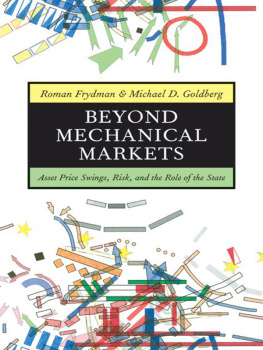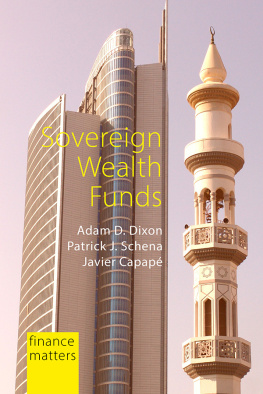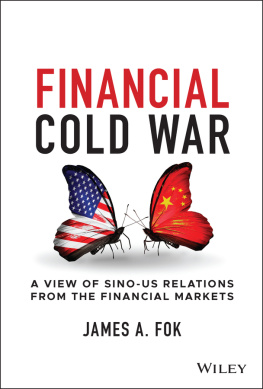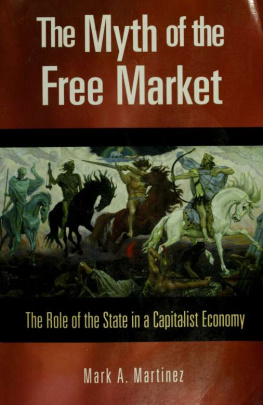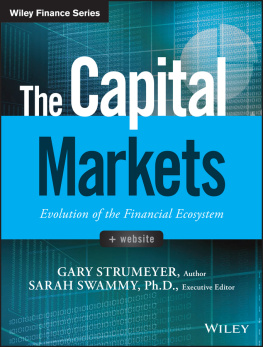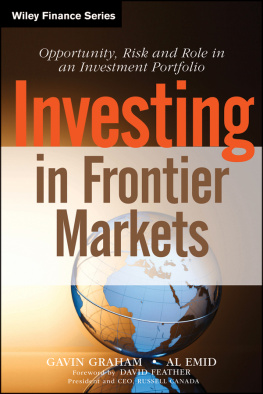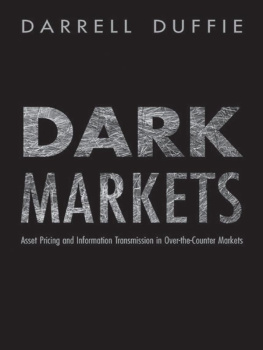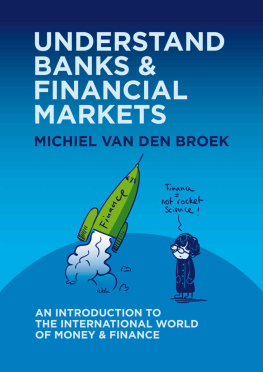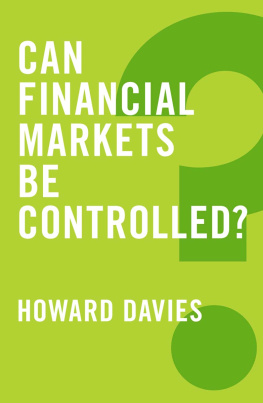Acknowledgments
W E ARE ENORMOUSLY grateful to Peter Dougherty of Princeton University Press for encouraging us to write this book. His guidance inspired us to rethink and extend an article on how placing imperfect knowledge at the center of macroeconomics and finance theory could help us to better understand the issues posed by the financial crisis that began in 2007. His unstinting belief that the technical findings from Imperfect Knowledge Economics: Exchange Rates and Risk (Princeton University Press, 2007) could, if presented in nonspecialist language, contribute to the public debate was the crucial catalyst for this book.
We have benefited tremendously from illuminating discussions about modern macroeconomics, stretching over decades, with Edmund Phelps. We have likewise been stimulated and sustained over the years by George Soros's ideas about the role of imperfect knowledge and reflexivity in the workings of financial markets and historical change.
Robert Skidelsky and Michael Woodford read most of the chapters in this book in draft form. Their penetrating insights on Keynes's thought as well as contemporary macroeconomic theory led us to important revisions of our ideas. Anatole Kaletsky took an early interest in our work and its broader implications for understanding the relative role of the market and the state in modern economies. Anatole's intellectual breadth has inspired our work.
Many discussions over the years at the Center on Capitalism and Society at Columbia University have nurtured us in our pursuit of an approach that recognizes the crucial importance of imperfect knowledge for understanding market outcomes. Richard Robb's early incisive comments on Imperfect Knowledge Economics, and on drafts of the initial chapters, helped us to clarify our arguments about contemporary finance theory and improve their presentation.
The recent creation of the Institute for New Economic Thinking (INET) has already greatly encouraged us in our ongoing efforts to develop an alternative approach to macroeconomics and finance. Reactions to our presentations at INET's inaugural conference at King's College, Cambridge, as well as many stimulating discussions about financial reform with its executive director, Robert Johnson, enabled us to sharpen a number of our key arguments.
Niels Thygesen also generously shared with us his extensive knowledge of various contemporary approaches to financial reform. His critique of our policy proposals saved us from many omissions and misconceptions. An enlightening conversation with Adair Turner in the early phase of the development of our policy framework enabled us to improve substantially our comparison of the policy proposals based on Imperfect Knowledge Economics with those advanced by public bodies in the wake of the crisis.
Thought-provoking discussions with many other colleagues and friends have led us to numerous revisions of our ideas and arguments. Many years of joint research with Andrzej Rapaczynski on the post-communist transition served as the basis for our arguments concerning the similarities between the economics of central planning and contemporary macroeconomics and finance. We benefited greatly from the historian's perspective on the early parts of the manuscript provided by Jan Gross. Peter Jungen's insightful reading of the manuscript, as well as a number of extensive discussions with him, helped us to refine our analysis of the connection between entrepreneurship, other key features of modern economies, and the allocative role of financial markets.
We are indebted to Bruce Elmslie, Lejb Fogelman, Irena Grudzinska-Gross, Helena Hessel, Soren Johansen, Katarina Juselius, Henri Kowalski, Jonathan Schell, Peter Sullivan, Josh Stillwagon, Klaudiusz Weiss, and Emre Yoldas for taking the time to read parts of an early version of the manuscript. Their queries and astute suggestions led to refinements and revisions of some of our key arguments.
We are grateful to Matthew Winkler for his interest in our work and his generosity in making available the electronic record of Bloomberg's Market Wrap stories. The evidence from these stories has been crucial to our analysis of the relative role of psychological and fundamental considerations in driving movements in asset prices and risk. In this book, we present early findings from this analysis. We are indebted to Nicholas Mangee for his extraordinary effort in analyzing the Bloomberg stories and in his work with us to develop an approach to the empirical analysis of asset markets that combines traditional econometric methodology with narrative evidence.
We are deeply grateful to Jonathan Stein for his extraordinary editorial work, which has greatly improved the book's style, presentation, and readability. Jonathan's efforts went well beyond those of a first-rate editor: our many stimulating discussions with him led to substantial rethinking of a number of arguments in this book. We were also very fortunate to have had Marcella Frydman and Kenneth Murphy involved in the editorial process. Cyd Westmoreland provided expert copyediting, and Peter Strupp and his staff at Princeton Editorial Associates were instrumental in accomplishing the rare feat of making the book's production a painless process.
Turning to institutional sponsors, we are pleased to acknowledge support for editorial assistance from the C. V. Starr Center for Applied Economics at New York University and the University of New Hampshire. We are grateful to Robert Litan from the Ewing Marion Kauffman Foundation for his interest in this book. The foundation's grant enabled us to devote the summer of 2010 to its completion.
Finally, we thank Halina, Sybille, Ben, Julia, and Marcella for their patience and warm support.
1
The Invention of Mechanical Markets
A LTHOUGH THE raison d'tre for financial markets implies that they cannot assess asset values perfectly, over the last four decades of the twentieth century, economists developed an approach to macroeconomics and finance that implied that financial markets allocate society's capital almost perfectly. To reach this conclusion, economists constructed probabilistic models that portray an imaginary world in which nonroutine change ceases to be important; indeed, it becomes irrelevant.
An economic theory of the world that starts from the premise that nothing genuinely new ever happens has a particularly simpleand thus attractivemathematical structure: its models are made up of fully specified mechanical rules that are supposed to capture individual decisionmaking and market outcomes at all times: past, present, and future. As one of the pioneers of contemporary macroeconomics put it, I prefer to use the term theory'[as] something that can be put on a computer and runthe construction of a mechanical artificial world populated by interacting robots that economics typically studies (Lucas, 2002, p. 21).
To portray individuals as robots and markets as machines, contemporary economists must select one overarching rule that relates asset prices and risk to a set of fundamental factors, such as corporate earnings, interest rates, and overall economic activity, in all time periods. Only then can participants' decisionmaking process be put on a computer and run. But this portrayal grossly distorts our understanding of financial markets. After all, participants' forecasts drive the movements of prices and risk in these markets, and market participants revise their forecasting strategies at times and in ways that they themselves cannot ascertain in advance.
To be sure, with insightful selection of the causal variables and a bit of luck, a fully predetermined model might adequately describeaccording to statistical or other, less stringent, criteriathe past relationship between causal variables and aggregate outcomes in a selected historical period. As time passes, however, market participants eventually revise their forecasting strategies, and the social context changes in ways that cannot be fully foreseen by anyone. The collapse of the hedge fund Long Term Capital Management in 1998, and the failure of ratings agencies to provide adequate risk assessments in the run-up to the financial crisis that began in 2007, shows that models assuming that the future follows mechanically from the past eventually become inadequate. Trading in financial markets cannot, in the end, be reduced to mere financial engineering.

